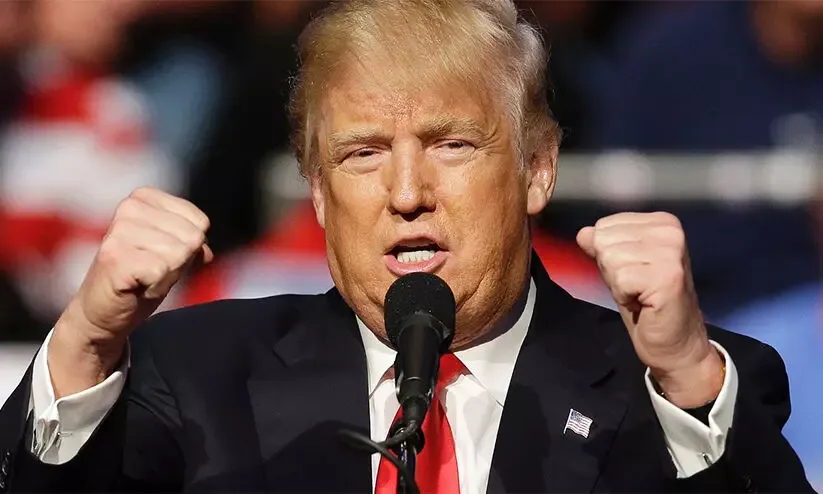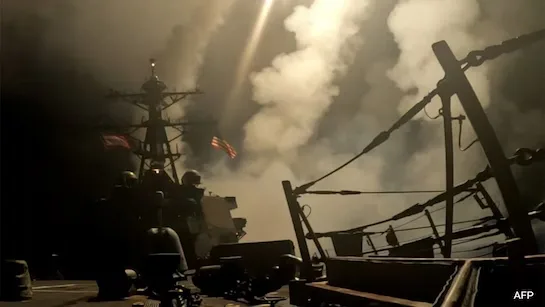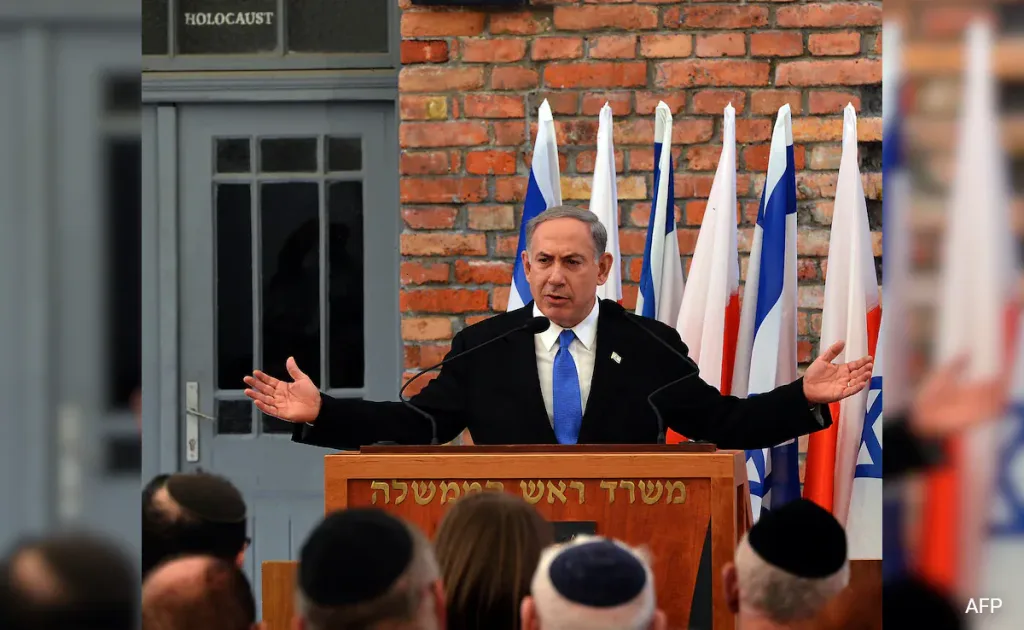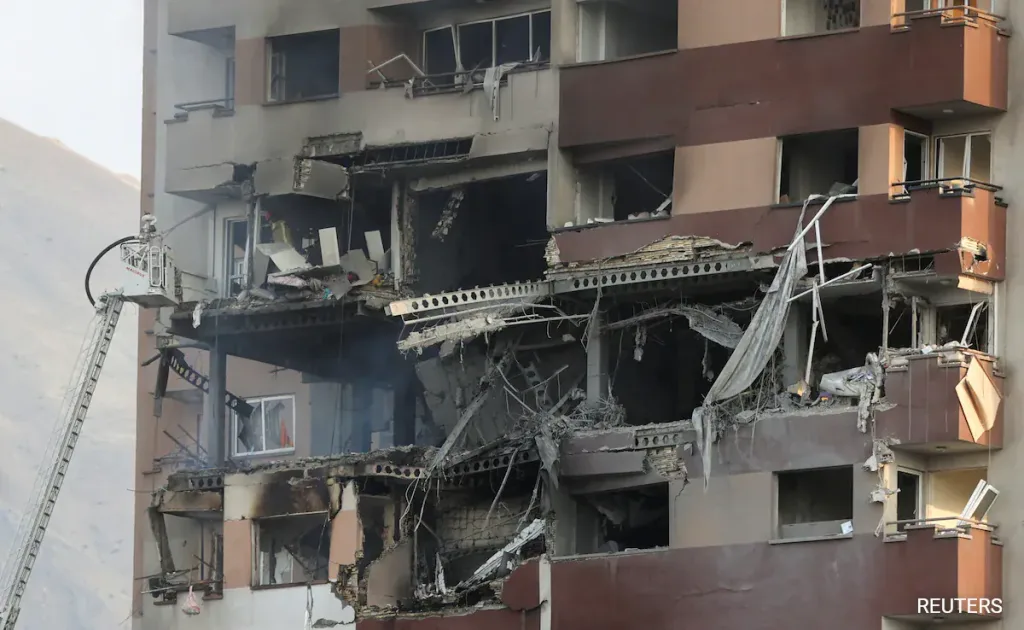President Donald Trump has issued one of his most direct and forceful threats to Iran in recent months, warning that the Islamic Republic will face unprecedented military consequences if it attacks American interests or personnel in the Middle East. The stark warning comes at a critical juncture as nuclear negotiations between Washington and Tehran appear to have reached an impasse, while the broader Middle East region experiences its most dangerous escalation in years following Israeli strikes on Iranian nuclear facilities and subsequent retaliatory missile attacks.
Table of Contents
Trump’s latest statement represents a significant escalation in rhetoric between the two nations, with the President declaring that Iran will face “the full force and might of the United States military” in ways “never seen before” if American assets are targeted. This ultimatum arrives amid growing concerns about regional warfare spreading beyond the current Israel-Iran conflict, with multiple US military bases in the region potentially becoming targets as tensions reach boiling point. The timing of Trump’s threat coincides with stalled nuclear negotiations and increasing pressure from Congress to take decisive action against Iran’s nuclear program, creating a complex diplomatic and military landscape that could determine the future of Middle Eastern stability.
As Iranian officials continue to threaten American interests in response to perceived US support for Israeli military actions, the world watches nervously to see whether diplomatic solutions can prevent what many analysts fear could become a direct military confrontation between the United States and Iran.

Trump’s Latest Warning to Iran
President Trump’s most recent threat to Iran represents a marked escalation in the administration’s rhetoric toward the Islamic Republic, with language that leaves little room for diplomatic interpretation. “If we are attacked by Iran in any way, shape or form, the full force and might of the United States military will come down on you in a way we have never seen before,” the US President declared in his latest statement. This warning goes beyond previous diplomatic communications, suggesting that any Iranian action against American interests would trigger what could be the most significant military response in the region’s modern history.
The President’s language signals a departure from the measured diplomatic approach that had characterized earlier phases of US-Iran relations under his administration. Tehran will face “the full strength and might of the US Armed Forces” if it targets American assets, the president has warned US President Donald Trump has warned Tehran of retaliation “at levels never seen before” if Iran decides to escalate its current confrontational stance. This escalation in rhetoric reflects growing frustration within the Trump administration over Iran’s resistance to nuclear negotiations and its continued support for regional proxy forces.
The timing of Trump’s threat appears strategically calculated to coincide with heightened tensions following Israeli military actions against Iranian nuclear facilities. Trump emphasized that while military action remains an option, he still believes diplomatic solutions are preferable, though his patience appears to be wearing thin as negotiations continue without significant progress.

Nuclear Deal Negotiations at Critical Juncture
The backdrop to Trump’s threats lies in increasingly difficult nuclear negotiations that have reached what many observers describe as a critical impasse. U.S. President Donald Trump has repeatedly threatened Iran with bombing if it does not reach a new nuclear deal. The next round of talks is due this week, with Trump saying negotiations would be held on Thursday while Tehran says they will take place on Sunday in Oman. The disagreement over even basic scheduling reflects the deep divisions that continue to plague diplomatic efforts between the two nations.
Trump’s approach to nuclear negotiations has combined maximum pressure tactics with threats of military action, creating a high-stakes environment where both sides appear unwilling to make significant concessions. Trump has said recently that he has held Israel back from attacking Iran’s nuclear processing facilities, and threatened that if the current talks between the United States and Iran don’t curb the latter’s ability to enrich uranium, then military strikes are an option. This revelation suggests that the President has been actively managing military tensions while simultaneously pursuing diplomatic solutions.
The nuclear negotiations face fundamental challenges beyond immediate security concerns, with Iran demanding sanctions relief while the United States insists on comprehensive restrictions on Tehran’s nuclear program. These competing demands have created a diplomatic deadlock that appears increasingly difficult to resolve through conventional negotiation frameworks, leading to Trump’s more aggressive rhetorical stance.
Regional Military Escalation and US Response
The current crisis has been significantly complicated by the recent exchange of military strikes between Israel and Iran, which has transformed regional dynamics and forced the Trump administration to navigate an increasingly complex security environment. An Israeli attack on Iran has thrown the Middle East into chaos and imperiled Trump administration efforts toward a diplomatic solution to Iran’s nuclear program. The Israeli strikes have fundamentally altered the strategic landscape, making diplomatic solutions more difficult while increasing pressure for American military involvement.

Iranian threats against US military installations in the region have added another layer of complexity to an already volatile situation. The warnings and evacuation orders came after Iran publicly threatened to attack U.S. bases in the Middle East if they were attacked first. These threats have forced the Pentagon to implement heightened security measures at American facilities throughout the region, while also preparing contingency plans for potential Iranian attacks on US personnel or assets.
The Trump administration faces the delicate challenge of supporting its Israeli ally while avoiding direct military confrontation with Iran that could escalate into a broader regional war. This balancing act has become increasingly difficult as both Israeli and Iranian actions have raised the stakes, forcing American decision-makers to consider scenarios that could draw the United States into direct military conflict in the Middle East.
Domestic Political Implications and Congressional Pressure
Trump’s threats to Iran also reflect significant domestic political pressures as the administration faces criticism from Congress over its handling of Middle Eastern policy. Key right-wing figures, including some Trump allies, question the Israeli strikes and warn against a US war with Iran. This division within Trump’s political base creates additional complications for the administration’s Iran policy, as the President must balance competing demands from different political constituencies.
The domestic political landscape surrounding Iran policy has become increasingly complex, with some lawmakers calling for more aggressive action while others warn against military entanglement in Middle Eastern conflicts. This political pressure influences Trump’s rhetorical approach, as he seeks to demonstrate strength and resolve while avoiding commitments that could lead to unpopular military interventions.
Congressional oversight of Iran policy has intensified following recent escalations, with lawmakers demanding detailed briefings on administration plans and expressing concerns about the potential for uncontrolled escalation. These domestic political dynamics add another layer of complexity to an already challenging international situation, influencing both the timing and content of presidential statements regarding Iran.

Potential Consequences and Strategic Analysis
Military analysts warn that Trump’s threats to Iran could have far-reaching consequences that extend well beyond immediate regional security concerns. Within a relatively short time, Donald Trump is likely to face the decision point on whether or not to pursue a military strike against Iran. This decision point represents one of the most significant foreign policy challenges of Trump’s presidency, with implications that could reshape Middle Eastern geopolitics for decades.
The strategic implications of potential US military action against Iran include the possibility of Iranian retaliation against American allies, disruption of global energy markets, and the potential for escalation into a broader regional conflict involving multiple nations. Defense strategists have identified numerous scenarios where limited military action could spiral into much larger confrontations, making the current situation particularly dangerous for all parties involved.
International allies have expressed growing concern about the trajectory of US-Iran relations, with many urging continued diplomatic engagement despite recent setbacks. The European Union and other partners have warned that military action could destabilize the entire region while undermining efforts to address Iran’s nuclear program through negotiated solutions.
Frequently Asked Questions
What specific actions by Iran would trigger the “full might” of US military response according to Trump’s threat?
Trump’s warning encompasses any Iranian attack on American personnel, assets, or interests “in any way, shape or form,” which could include direct strikes on US military bases, attacks on American naval vessels in the Persian Gulf, terrorist operations against US facilities, or actions against American personnel anywhere in the Middle East. The broad language suggests that even relatively minor incidents could potentially trigger significant military retaliation, making the current situation particularly volatile and unpredictable for both sides.
How realistic is the prospect of direct US-Iran military conflict given current tensions and diplomatic efforts?
While both sides continue to express preference for diplomatic solutions, the realistic prospect of military conflict has increased significantly due to the breakdown of nuclear negotiations, Iranian threats against US bases, and the broader regional escalation involving Israel. Military analysts suggest that the risk of accidental escalation or miscalculation has reached dangerous levels, particularly given the presence of US forces throughout the region and Iran’s network of proxy forces. However, the catastrophic consequences of direct conflict provide strong incentives for both nations to avoid crossing red lines that would make military confrontation inevitable.








